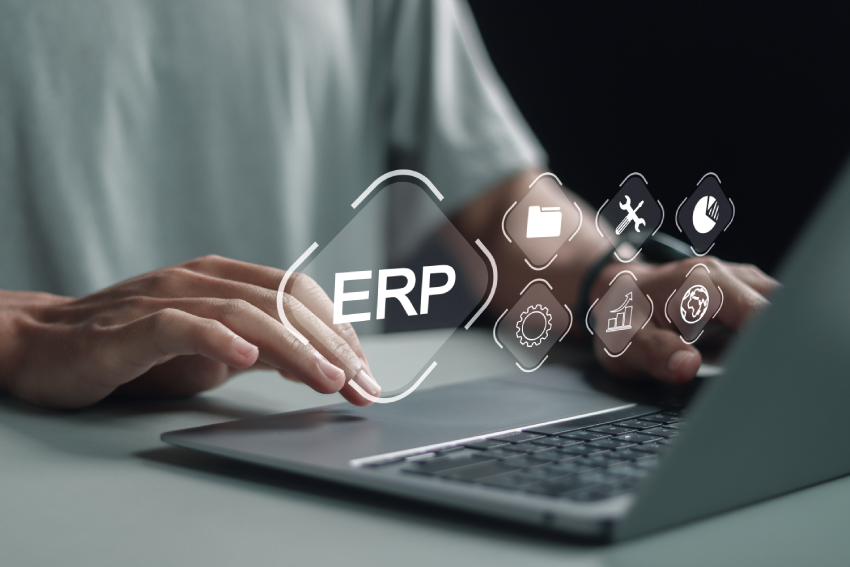ERP Implementation Process: Steps for Dairy Success
Putting an ERP (Enterprise Resource Planning) system in place is crucial for boosting operations, efficiency, and profit in the dairy industry. The correct ERP system can make business processes smoother, improve work output, and guide informed decision-making. However, introducing an ERP system might seem overwhelming if it’s not planned correctly or done carefully. In this blog, we guide you through the main steps in the ERP implementation process. This ensures dairy businesses can gain from improved workflows, better operational transparency, and a general boost in their performance.
Discovery and Planning: The Foundation of Success
The beginning phase in the execution of ERP is known as discovery and planning. This vital part lays down the base for adopting ERP successfully by ensuring the business comprehends its requirements, objectives, and anticipations from the ERP system. In this stage, businesses must:
- Conduct a thorough analysis of existing workflows, processes, and pain points.
- Involve the key people of interest so that everyone understands the distinct needs of every department in the dairy business.
- Define specific objectives and outcomes for the ERP implementation.
- Select the appropriate ERP solution that aligns with the business’s goals and growth plans.
Choosing an ERP system that suits the dairy industry’s needs is important. Companies need to ask themselves: Which ERP system available will take care of unique challenges in dairy operations like handling milk production, controlling inventory, getting traceable data, and complying with regulations? Answering these questions will set a solid base for a delicate changeover and ensure that its execution matches well with your long-term business objectives.
Understanding an ERP Solution
Before starting the enterprise resource planning implementation, it is crucial to understand what an ERP solution entails and how your dairy business could benefit from it. Fundamentally, an ERP solution comprises a set of integrated software tools created for managing and automating key functions such as finance, supply chain management, production, inventory control, and human resources in businesses.
In dairy businesses, ERP solutions could have particular modules shaped to match the requirements of the dairy sector. This might include tools for tracking herd administration, supervising the production process, and confirming adherence to trade norms.
When data is centralised across different departments through an ERP system, it helps those who make decisions get an overview of the operations in real time. This can assist in better coordination and increase overall productivity. For a successful changeover to ERP, it’s important to understand what the system can do, how it works with the current tools you use, and how it fits your daily routine.
Phases of an ERP Implementation Plan
Putting ERP systems in place is a step-by-step process. It needs meticulous carry out to stop interruptions and get the outcomes you want. An ERP setup plan usually has these stages:
- Planning Before Implementation: The ERP system choice is finalised in this phase. A detailed plan of the project and implementation team assembly takes place, along with clear objectives for how the system should perform.
- System Design and Customisation: At this stage, we adapt the ERP system to suit the dairy business’s unique requirements. This might involve creating workflows, transferring data, and combining it with other systems.
- Movement and Testing of Data: In this stage, data from current systems is moved to a new ERP solution. The system’s performance is checked through tests to ensure it works as anticipated. Any problems found are fixed before its complete application.
- Training and Change Management: It is essential to train employees to use the ERP system effectively. This helps smooth the assimilation process among staff members. Also, change management initiatives are needed. They help address any resistance or worry among workers and control transition stages.
- Go-Live and Support After Implementation: When the system is introduced, we need to continue providing support and surveillance. This will help ensure that the ERP system works completely well and satisfies business requirements. This step involves problem-solving, fixing issues, and offering more training if needed.
Ensuring Success with the Right ERP System
Choosing and implementing the right ERP system is essential to be successful in the implementation process of an ERP. A dairy business needs an ERP system that can handle its present needs and provide scalability when it grows in the coming times. Things that should be taken into consideration include:
- Features Specific to Industry: Does the ERP Structure provide dairy-specific abilities like managing milk production, controlling inventory, tracking traceability, and keeping records for compliance?
- Scalability: Can the ERP system grow with the business as it expands or introduces new products and services?
- User-Friendliness: Is the system intuitive and easy for workers to understand? A system that is user-friendly cuts down training time and speeds up how fast it can be implemented.
- Modifications and Integration: Can the ERP system be adapted to accommodate the unique requirements of a dairy business, and does it integrate smoothly with other present technology tools and equipment?
- Support and Maintenance: Is the ERP provider offering consistent post-implementation assistance and system upgrades to ensure continuous performance and enhancements?
At SoftTrace, we are experts in assisting dairy companies in implementing ERP systems and other dairy manufacturing solutions, which help simplify their processes, increase compliance, and enhance overall performance. Contact us to learn how our enterprise resource planning software can change your dairy business. Contact us for more information today.
